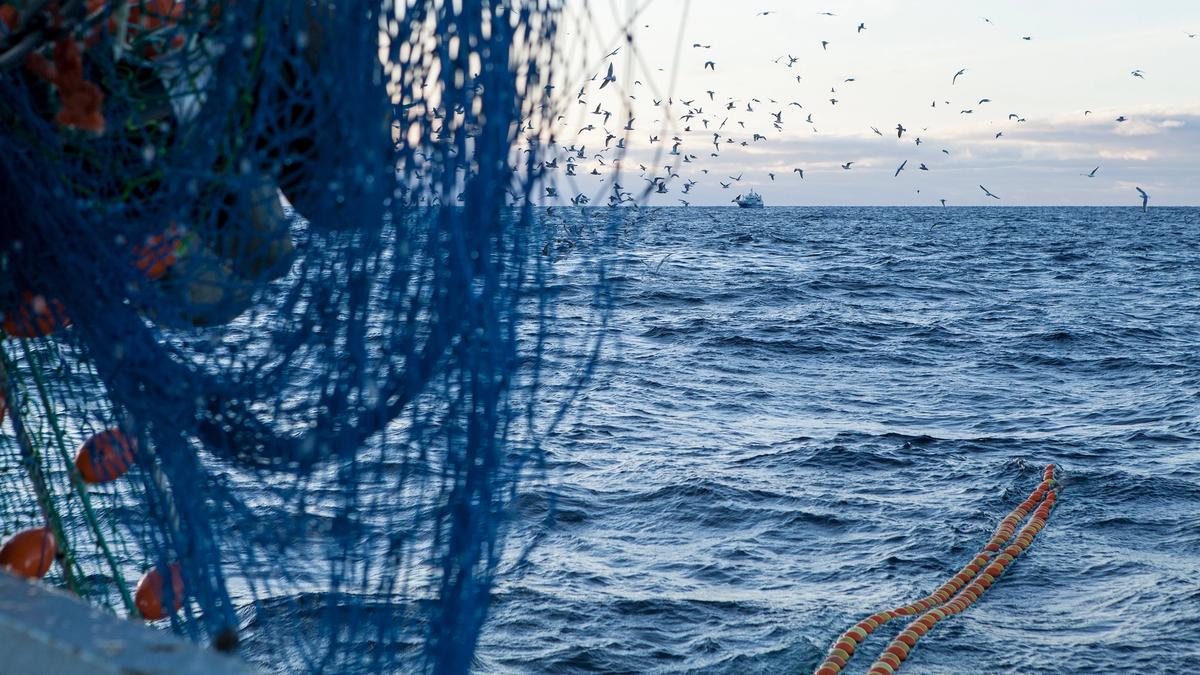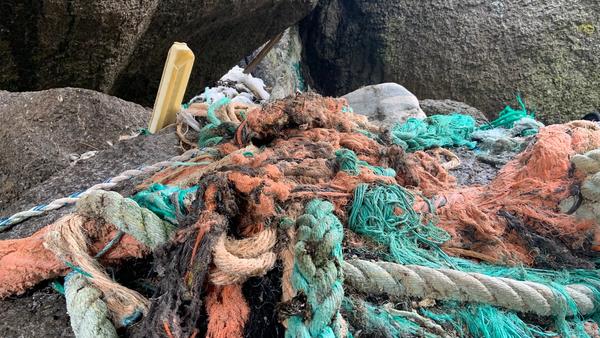Working Group 43 of the United Nations’ Joint Group of Experts on the Scientific Aspects of Marine Environmental Protection (GESAMP) published the report “Sea-based sources on Marine Litter” in September 2021.
The report documents that marine litter from sea-based sources constitutes a significant source of the total volume of plastic in the sea and has serious environmental consequences. Among other things, the report shows that ALDFG (abandoned, lost or otherwise discarded fishing gear) and other forms of sea-based litter (fragments of rope and nets, etc.) have a major impact on wildlife both on land and in the sea. The report also references extensive financial losses on the part of fisheries, resulting from the loss of target species and the loss of the gear itself, as well as more complex and indirect losses arising from the way in which ghost fishing and litter impact financial resources in the sea.
Partially good regional data – a need for better global data
The ambition of the working group had been to adopt a global perspective, but the work has revealed significant geographical variations and insufficient data to scientifically quantify the volume of waste from the identified sources. Robust and credible data is important as a basis for the prioritisation of measures and a unified understanding of the situation. The report notes that the much used distribution of 80% land-based and 20% sea-based sources cannot be attributed to any scientific or grey literature.
The widely used estimate of “640,000 tonnes of abandoned, lost or otherwise discarded fishing gear is lost in the ocean every year” is also based on uncertain and obsolete theoretical data from an individual report from 1975 that was further used in an estimate from 2009. The working group will therefore continue to focus on providing a better data basis (quantity, type of waste and ALDFG hotspots) and global estimates. Nevertheless, the scope and types of waste will vary between countries and reflect the types of activities conducted within an area. One of the objectives of the report is to improve the understanding of sources and consequences and the report is clear about the fact that a lack of global estimates should not be an obstacle to local and regional action and that efforts are urgently needed to reduce the flow of litter to the sea from these sources.
Marine litter from fisheries - ghost fishing resulting from both commercial fishing gear and recreational fishing
The report provides a summary of data relating to waste originating from both small and large entities within the fisheries industry and also takes a look at recreational fishing. The report contains an overview of plastic materials in terms of tool types and associated areas of application. The focus of the report is on how different factors interact and how they can affect the likelihood of loss and the propensity for leaving/dumping tools in the sea. This not only applies to physical factors or types of tools, the report also describes how fishermen’s knowledge and experience can prevent loss.
The report includes a map of places that documents reporting or scientific documentation of ALDFG, but notes that these maps cannot be read without being conscious of the large regional variations in access to and quality of data with regard to the loss of fishing gear. Based on a more recent article (Richardson et al., 2019a), it has been estimated that 5.7% of nets, 8.6% of fishpots and 29% of fishing lines are lost at sea every year and that this can be used to estimate the scope of the problem, subject to some reservations.
The global number of recreational fishermen is estimated to be between 225 and 700 million active participants, which therefore also constitutes a potentially significant source of ALDFG. Nevertheless, the available data relating to this factor is also of varying quality and does not include all types of recreational fishing. In many cases, it can also be difficult to know whether recovered fishing gear originates from commercial or recreational fishing. There is data showing that there are waters in which ALDFG from recreational fishing exceeds ALDFG from commercial fishing, but whether this applies to other or many locations is unknown and it is important to gain greater knowledge of this.
Aquaculture – critical lack of data in a global growth industry
Aquaculture has become an industry in over 200 countries and close to 50% of seafood today is derived from aquaculture. Marine litter is the result of worn equipment, loss in connection with incidents and extreme weather, as well as inadequate waste management. The report refers to both the lack of global estimates and non-existent reports of abandoned, lost or dumped plastic from farming in the majority of the countries involved. In light of the strong growth in the industry, the expert group regards it as crucial to address this issue in further research and in its work.
Shipping and other boat traffic – beach cleaning shows an increased volume of waste from commercial shipping
Growth has been witnessed in both the merchant and cruise fleets. The report also describes different types of waste, sources and causes. Some types of waste are easy to link to a source, while other types of waste can be difficult to distinguish from land-based waste. This can be partially remedied by seeing the relationship between several findings in the same area, while also including the location, activity and wear and tear in the analysis. Also in this area, the report shows that there is minimal direct data to enable optimal quantity calculations, and theoretical models engender considerable uncertainty. Improvements have been registered for waste delivered in European ports as a result of the Ship Waste Directive ((EU) 2019/883) from 2019, but there is still a gap between the expected amount of waste and the amount of waste that is delivered. The report also states that it would be useful to have better modelling tools for evaluating when, how and why litter occurs from different categories of vessels. This will also contribute to better quantity estimates and highlight areas exposed to accumulation of waste from shipping. Microplastics from antifouling paint and tank cleaning are also included in the report. The report references the fact that the most significant consequence of waste from this sector may be financial and linked both to waste management and collisions that result in injury to people and damage to equipment.
Other sources
Fisheries, aquaculture and shipping are the most well-known and discussed sources of marine litter from sea-based sources. The report also reviews the dumping of waste, both regulated and illegal. In terms of volume and mass, dredging sediments are the largest source. The greatest challenge is that many countries, some of them highly industrialised, are not linked to the London Convention. Thus, they are not included in the global reporting system and the extent of dumping is therefore unknown.
The report calls for quantification of and greater insight into marine litter from offshore activity. There are some data from the North Sea, but these are not necessarily transferable to other geographical areas due to differences in production material and the use of chemicals.
The way forward for the work
The report contains a dedicated chapter of solutions to reduce sea-based marine litter and ALDFG. This will require preventive measures, reduction measures and clean-up initiatives, as well as a combination of stakeholders, efforts and instruments. The importance of strengthening preventive efforts in addition to clean-up activities is also emphasised. Through international standards for global shipping, best practices can be incorporated, and it will also be possible to ensure access to appropriate data and documentation of trends. The report also addresses measures that combine management, technology, innovation and changes in attitude and emphasises waste solutions in port, the design of fishing gear, capture methods and training initiatives in particular.
The report also addresses the importance of strengthening research into causes, volumes, impacts and solutions to achieve scaled-up knowledge-based solutions at all levels. The report has reviewed and summarised a large volume of source materials and concludes by describing 26 data and knowledge gaps that the authors believe would support and improve strategies to both prevent and reduce sea-based litter, locally, regionally and globally.
The Working Group (WG43) has published several interim reports and, with this report, it concludes the assignment it was commissioned to perform on behalf of FAO and IMO in 2018.
Work has been undertaken in parallel in GESAMP WG40 Sources, Fate and Effects of Plastic and Microplastic in the Marine Environment.



